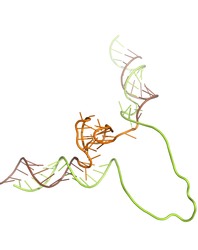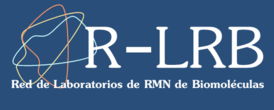
Laboratorio de RMN Manuel Rico
The Manuel Rico Nuclear Magnetic Resonance (NMR) Spectroscopy Laboratory (known as LMR for its initials in Spanish) is a scientific-technical service of the CSIC located on the Serrano Campus. The service was formally established in 2003 although the activity of the NMR laboratory dates back to 1964. Since 2018, together with the NMR Laboratory of the University of Barcelona and the NMR Laboratory of Euskadi, the LMR is part of Spain’s Singular Scientific and Technical Infrastructures map (known as ICTS for its initials in Spanish) belonging to the Ministry of Science, Innovation and Universities.
Currently, the LMR offers access to an 600 MHz and a 800 MHz NMR spectrometers, both equipped with cryoprobes, as well as facilities for preparing and handling biomolecular samples (proteins and nucleic acids), including a production service for isotopically labeled proteins.

The LMR is located on the Central Campus of the CSIC in a privileged location: The so-called “Poplar Hill”, just a stone’s throw from the “Residencia de Estudiantes” and the Rockefeller building. The LMR is located in a small building, which was the former printing house of the CSIC. In 2003, it was completely remodeled to house the 600 and 800 MHz spectrometers in optimal working conditions.
The LMR is managed by the Rocasolano Institute of Physical Chemistry (known as IQFR for its initials in Spanish) and maintains a close relationship both with the institute's NMR groups and with CSIC groups from nearby campuses (CIB, CENQUIOR, IC, etc.). This relationship ensures that the techniques used are kept up to date and provides additional user support. A team of specialists with extensive training and experience in the area of NMR, are responsible for keeping all instruments in an optimal state of operation. This technical team supports users according to their needs, implementing experiments for non-expert users, collaborating in the design of the strategies or in data interpretation, so as to get the most from all the possibilities that the instrumentation has to offer.
Objectives:
• Provide the instrumental means and scientific support to make the use of the most modern NMR techniques available for structural studies, especially those at the interface between Chemistry and Biology.
• Make the advanced features and techniques in the area of NMR available to researchers from public or private research centers, by sharing our advanced instrumentation and scientific expertise through collaboration.
• Empower researchers who are not NMR experts to take advantage of the atomic level insight into structure and dynamics that this technique affords, through training and guided use in high-performance NMR spectrometers.
• Advise researchers from public centers and pharmaceutical companies on the applications of NMR in their field.
Instrumentation at the LMR

Bruker 800 MHz US2 magnet, Avance spectrometer:
4 channels
Probeheads:
• 5mm cryoprobe TCI (1H,13C,15N) Z-gradient
• 5mm TXI (1H,13C,15N) XYZ-gradients
• 5mm QXI (1H, 13C, 15N, 31P) XYZ-gradients
Bruker AV 600 MHz oxford magnet, Avance spectrometer:
3 channels
Probeheads:
• 5mm cryoprobe TXI (1H,13C,15N) Z-gradient
• 5mm TXI (1H,13C,15N) Z-gradient
• 5mm TBI (1H,13C, BB) Z-gradient
